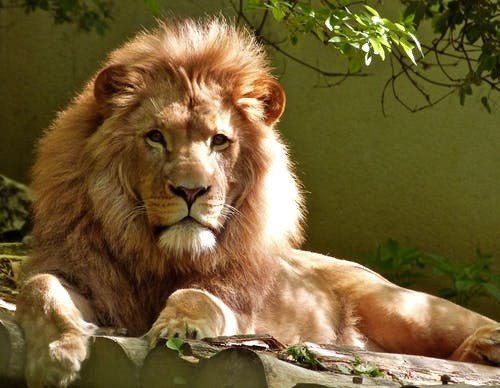Imagine going to the zoo where humans, not animals, are caged. Lions and bears roam freely around you, and you may give them a treat.
Many traditional zoos earn the reputation of keeping animals caged and in poor condition over the years. On the other hand, reverse zoos let the animals enjoy a cage-free environment, and visitors pay to be locked in a cage and stalked by nature's big predators like lions and bears.

Here are the most popular reverse zoos in the world:
Lehe Ledu Wildlife, Chongqing City China
Visitors pay the zoo to be locked in a cage and stalked by lions, tigers, and bears. The enclosure in which the visitors are locked in is mounted on a moving vehicle with chunks of fresh meat attached to it. The enclosed car then drives through the park, using the meat to lure the predators. AS lions smell the meat, it goes after the caged vehicle giving the tourist an opportunity for a very close encounter without being eaten alive.
Visitors in the cage can also push meat on a stick through a small opening to feed the tigers and the lions. The big cats then leap onto the vehicle to eat the offer, giving you the feeling that the lion is jumping on you.
The zoo launched the attraction in 2015, and tickets were sold out for three months.
READ: Researchers Observe Relationships, Grooming, and Social Behaviors of Dairy Cows
Orana Wildlife Park in Christchurch, New Zealand
Orana also offers the same attraction. Twenty (20) tourists are locked inside the cage mounted on a vehicle. The guests squeeze into the enclosure while the keepers watch the lions being feed by the keepers.
The zoo also offers other attractions such as visits feeding a giraffe, seeing a magnificent white rhino at a safe distance, and meeting the kiwi.
The facility is internationally renowned for its zoo-based breeding programs for endangered exotic and native species.
The park is New Zealand's only open-range zoo.
MonkeyJungle, Miami Florida
The jungle has a tagline "Where humans are caged and monkeys run wild!". This zoo offers guests traveling through the park on a caged walkway while various primates roam semi-freely in a natural habitat.
Monkey Jungle is a 30-acre zoological park in Miami and is one of the few protected habitats for primates in the United States, and is the only one that the public can explore.
The Monkey Jungle trip allows guests to explore Southeast Asian Wild Monkey Pool & Trail, the Cameroon Gorilla Forest, the Amazonian Rainforest, and the haven of birds, Wings of Love.
The facility is currently closed due to the COVID-19 pandemic lockdown.
READ ALSO: Saving Giant Panda at the Expense of Leopards, Snow Leopards, Wolves, and Asian Wild Dog
Parque Safari Zoo, Rancagua Chile
At Parque Safari, the park gives the costumers an opportunity to observe giraffe, emus, lions, and animatronic dinosaurs while using a variety of vehicles.
One can feed zebras, giraffes, and alpacas from a particular vehicle during the herbivore safari tour. A protected vehicle is used for big cats section to stay inches away from the tigers and lions.
READ NEXT: 5 Reasons Why You Should Not Go Whale Watching
© 2025 NatureWorldNews.com All rights reserved. Do not reproduce without permission.





